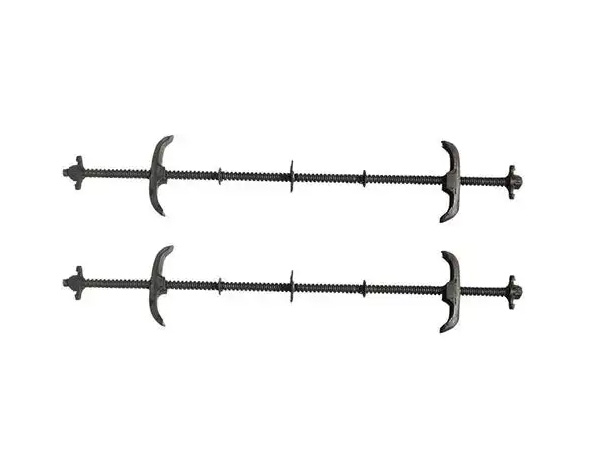- Site Navigation -

Waterproof Through-Wall Bolt
A Waterproof Through-Wall Bolt is an engineered fastener system designed to create structurally sound penetrations through concrete or masonry walls while maintaining complete hydra......
Waterproof Through-Wall Bolt:Comprehensive Technical Overview
A Waterproof Through-Wall Bolt is an engineered fastener system designed to create structurally sound penetrations through concrete or masonry walls while maintaining complete hydraulic integrity.Unlike conventional through-bolts,it incorporates multiple sealing technologies to prevent water migration,making it essential for below-grade structures,water containment facilities,and weather-exposed building envelopes.
Design&Engineering Features
Multi-Layer Sealing System:
Internal Seal:Hydrophobic compound(e.g.,polysulfide or polyurethane)injected into annular space between bolt and substrate.
External Seal:Compression washers with EPDM/Neoprene gaskets on both sides.
Cellular Barrier:Expandable foam sleeve that activates upon contact with moisture.
Corrosion-Resistant Materials:
Bolt:ASTM A193 B7/B8 stainless steel or hot-dip galvanized Grade 8.8 steel.
Sleeve:HDPE or corrosion-resistant alloy sleeve isolating bolt from concrete.
Washers:UV-stabilized polymer or stainless steel with integrated sealing lips.
Structural Capabilities:
Tensile strength:25–100 kN(depending on diameter).
Shear capacity:30–120 kN.
Tested to withstand 2–3 bar hydrostatic pressure.
Installation Protocol
Precision Drilling:
Diamond core drilling to exact diameter(e.g.,M16 bolt requires 20mm hole).
Hole orientation within 2°of perpendicular to prevent seal distortion.
Surface Preparation:
Substrate cleaning via vacuum/purging to remove debris.
Primer application for chemical anchor systems.
Sealing Sequence:
Insertion of hydrophilic tape into hole.
Bolt installation with pre-mounted external gaskets.
Torque-controlled tightening(e.g.,70–120 N·m for M16).
Injection of sealant through integrated ports(if applicable).
Applications
Water Retention Structures:Reservoir walls,sewage treatment tanks.
Below-Grade Construction:Basement formwork,tunnel segment connections.
Marine Environments:Dock facilities,offshore platform penetrations.
Critical Infrastructure:Nuclear containment vessels,dam infrastructure.
Performance Advantages
Active Leak Prevention:
Hydrophobic seals expand to 300%volume under moisture exposure.
Self-healing capability for microcrack compensation.
Galvanic Isolation:
Non-conductive sleeves prevent electrolytic corrosion between dissimilar metals.
Thermal Compatibility:
Accommodates±5mm thermal movement without seal compromise.
Longevity:
50+year service life in aggressive environments per ISO 9227 testing.
Testing&Certification
Watertightness:ISO 15848-1(Helium leak testing≤10⁻⁶mbar·L/s).
Structural:EN 1992-4(Concrete anchor design standards).
Chemical Resistance:ASTM C881(Epoxy sealant compatibility).
Fire Rating:Up to 4 hours(EJIOT certification).
Technical Innovations
Monitoring Integration:
RFID-enabled washers detecting seal degradation.
Fiber-optic sensors measuring bolt tension and moisture ingress.
Sustainable Designs:
Recyclable HDPE components with>90%post-consumer content.
Chromate-free sealants meeting RoHS directives.
Critical Considerations
Substrate Compatibility:Requires minimum C25/30 concrete strength.
Installation Temperature:5–40°C for optimal sealant curing.
Inspection Regime:Ultrasonic testing every 5 years for critical applications.
Conclusion
The Waterproof Through-Wall Bolt represents the convergence of structural engineering and materials science,providing a reliable solution for penetrations in demanding environments.Its multi-stage sealing system,corrosion resistance,and third-party certifications make it the preferred choice for engineers requiring guaranteed performance in water-exposure scenarios.Proper installation by certified technicians remains imperative to achieve specified waterproofing ratings.








